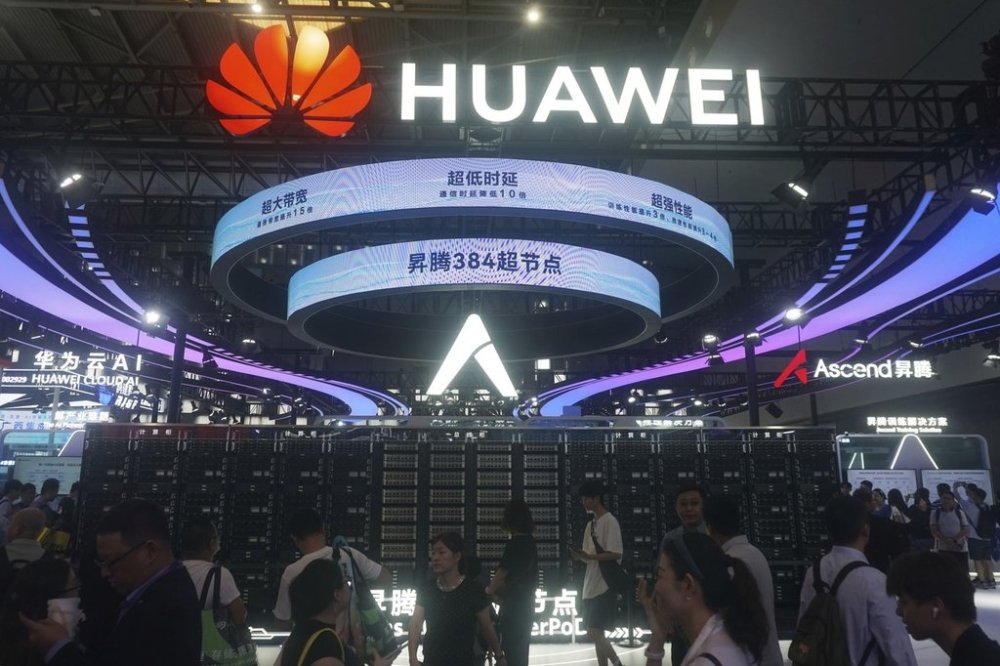How Huawei plans to outperform global tech leaders with less powerful chips
Advertisement
Read this article for free:
or
Already have an account? Log in here »
To continue reading, please subscribe:
Monthly Digital Subscription
$1 per week for 24 weeks*
- Enjoy unlimited reading on winnipegfreepress.com
- Read the E-Edition, our digital replica newspaper
- Access News Break, our award-winning app
- Play interactive puzzles
*Billed as $4.00 plus GST every four weeks. After 24 weeks, price increases to the regular rate of $19.00 plus GST every four weeks. Offer available to new and qualified returning subscribers only. Cancel any time.
Monthly Digital Subscription
$4.75/week*
- Enjoy unlimited reading on winnipegfreepress.com
- Read the E-Edition, our digital replica newspaper
- Access News Break, our award-winning app
- Play interactive puzzles
*Billed as $19 plus GST every four weeks. Cancel any time.
To continue reading, please subscribe:
Add Winnipeg Free Press access to your Brandon Sun subscription for only
$1 for the first 4 weeks*
*$1 will be added to your next bill. After your 4 weeks access is complete your rate will increase by $0.00 a X percent off the regular rate.
Read unlimited articles for free today:
or
Already have an account? Log in here »
BEIJING (AP) — China’s Huawei Technologies said Thursday that it would roll out the world’s most powerful AI computing clusters over the next two years as it seeks to outperform global leaders despite relying on less powerful domestic semiconductors.
China is racing to develop its own technology as America restricts what can be sold to China, including its most advanced chips. At the same time, the Chinese government has reportedly told companies to stop buying some American chips as it seeks to transform China into a global tech leader and one that is less reliant on imported components.
Huawei, at the forefront of efforts to develop home-grown technology, said at an annual customer event in Shanghai that it would launch new “superpods” in late 2026 and late 2027. That’s computer industry lingo for a group of interconnected computers that, in Huawei’s case, combines the power of thousands of chips.

That immense power is needed to run models in the burgeoning field of artificial intelligence, an area of hot competition between the U.S. and China.
“This is a significant milestone,” said Charlie Dai, a technology analyst at the research firm Forrester Research. “It signals a stronger push toward self-reliance and resilience in the face of export restrictions.”
Huawei announced plans to release the Atlas 950 and 960 superpods over the next two years. Dozens of the “SuperPoDs,” as Huawei brands them, could be connected to form what Huawei said would be the world’s most powerful “SuperClusters.”
The 950 and 960 are the most powerful superpods in the world and would remain so for years to come, a company news release said, based on product road maps from others in the industry.
The challenge for China is how to keep pace with American competitors such as Open AI and Google without access to the world’s most powerful semiconductors, notably those from America’s market-leading Nvidia. The answer has been to use many more chips and develop the architecture to make them work well together.
“Our strategy is to create a new computing architecture, and develop computing SuperPoDs and SuperClusters, to sustainably meet long-term demand for computing power,” Eric Xu, the current rotating chairman of Huawei, told the customer conference, according to a transcript provided by the company.
Huawei, based in Shenzhen in southern China, also announced plans to launch new AI chips in its Ascend series over the next three years. The Atlas 950 and 960 superpods would be based on the Ascend 950 and 960 chips, due out in 2026 and 2027. A planned Ascend 970 chip could follow in 2028.

